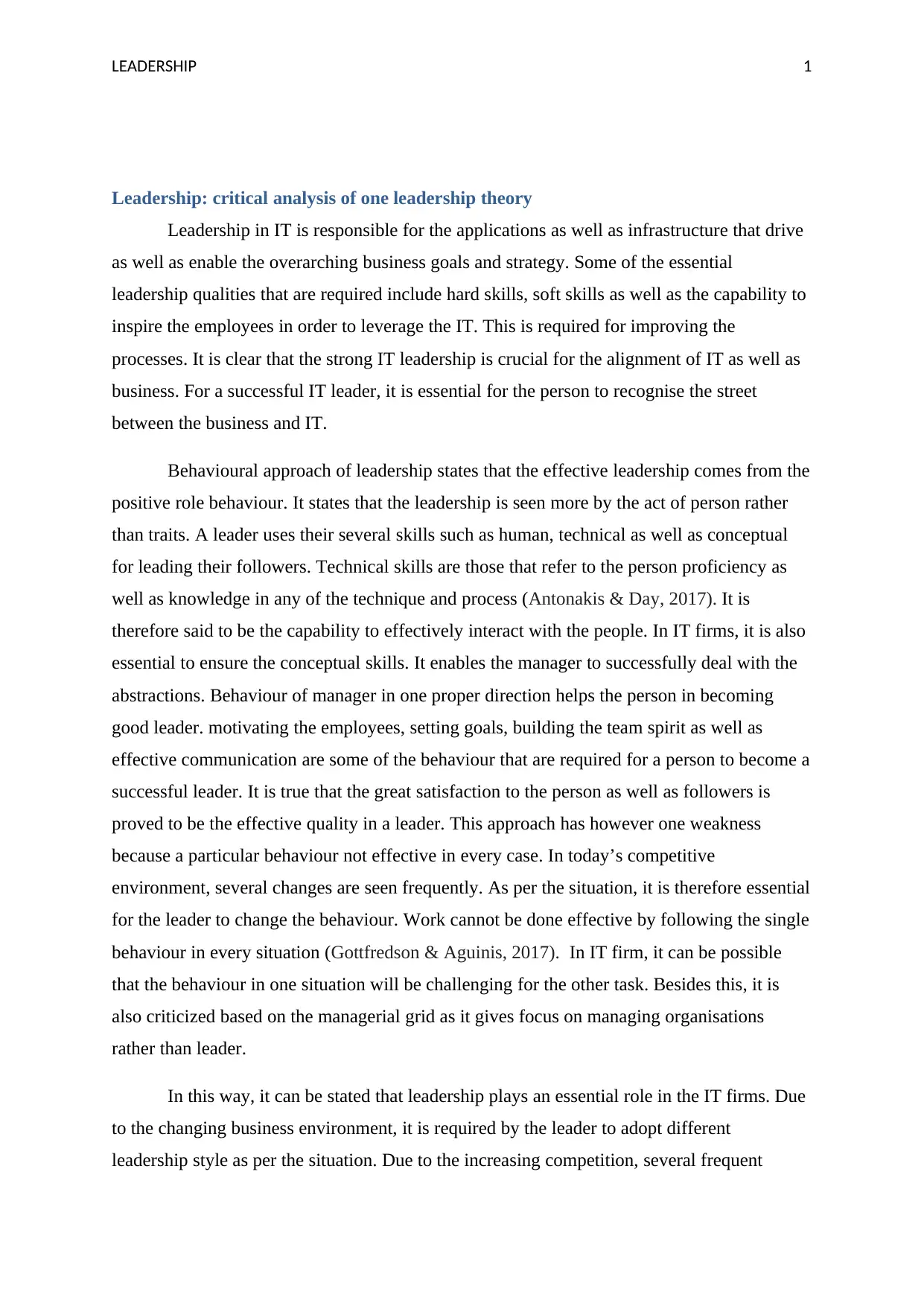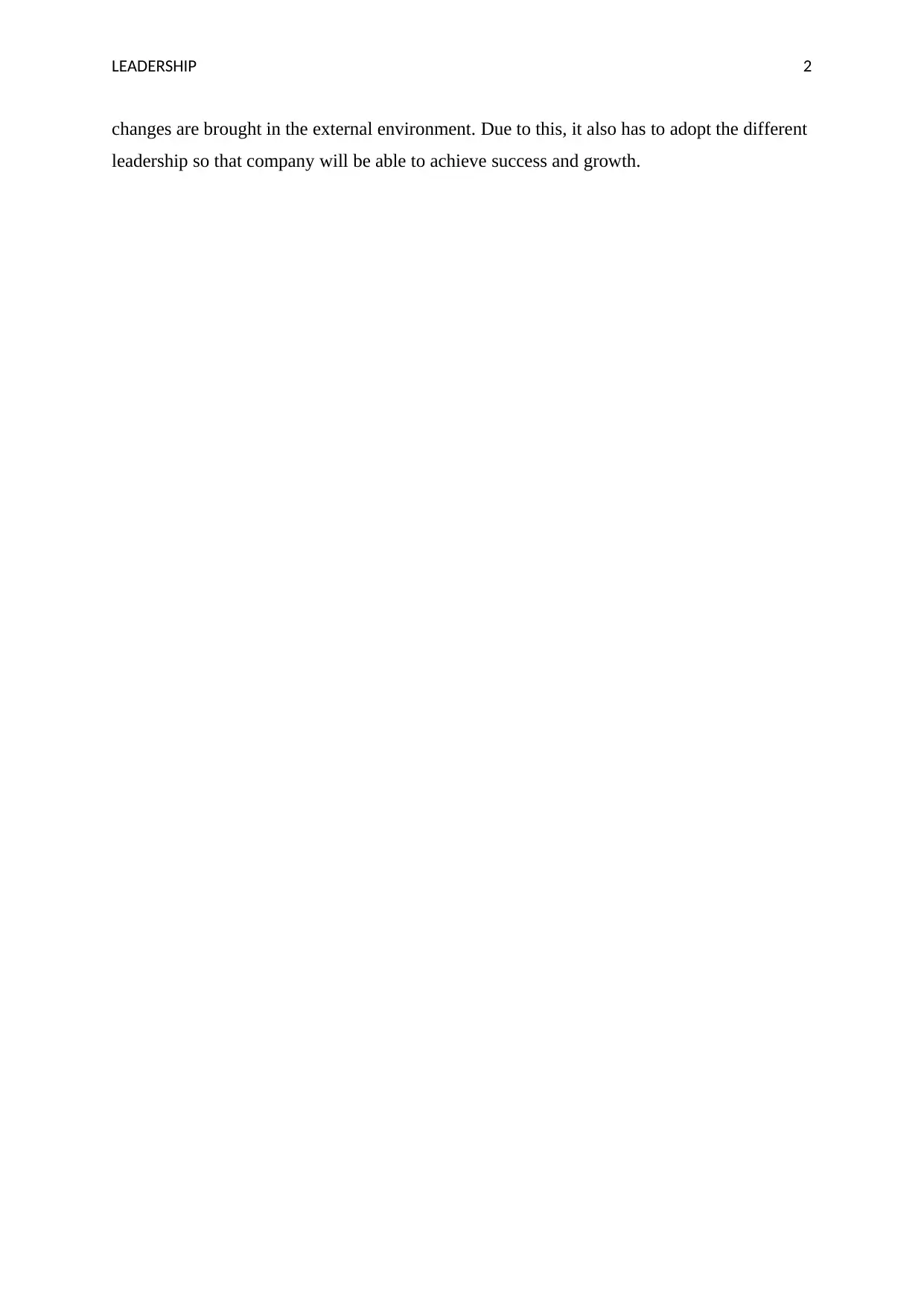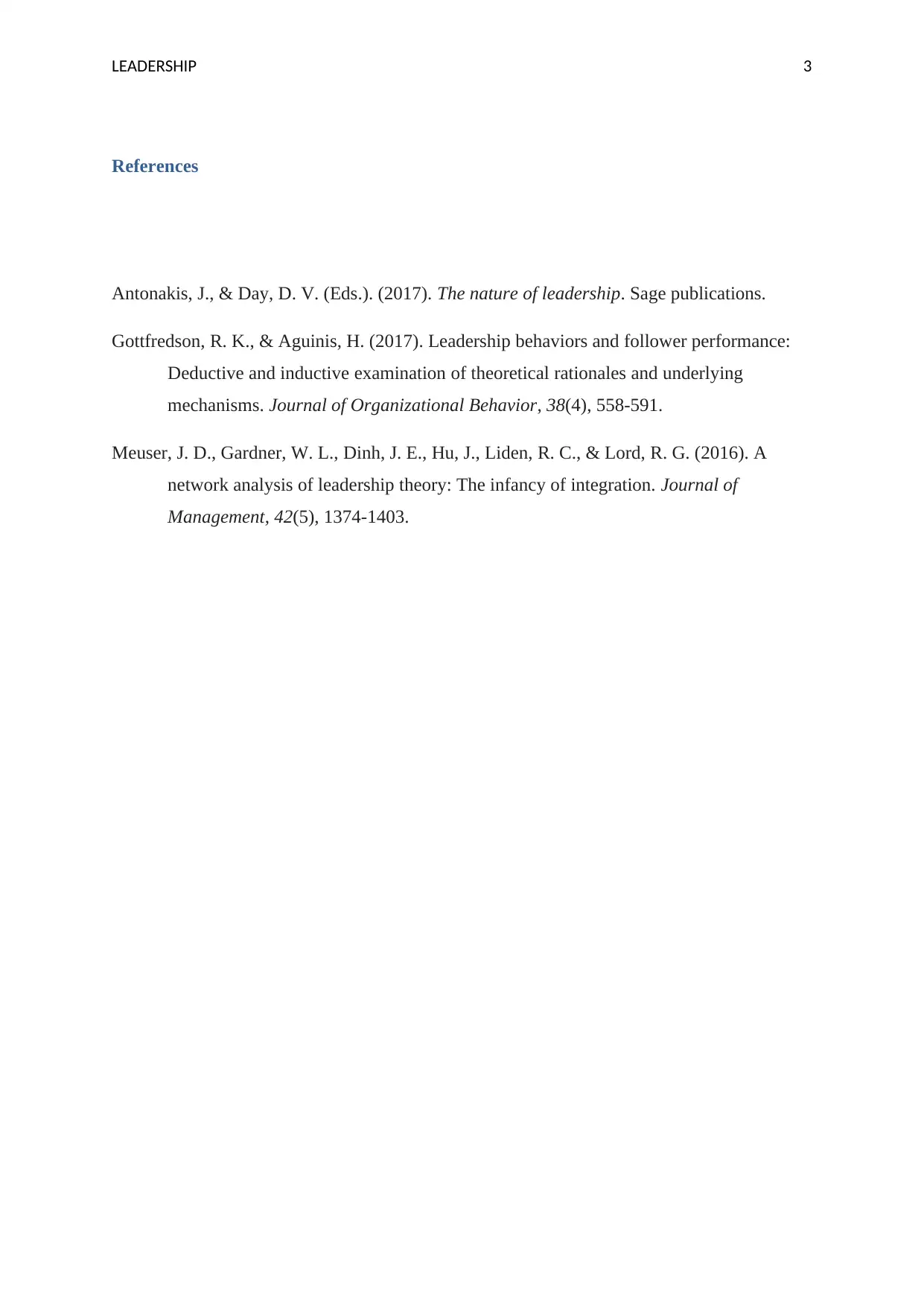Critical Analysis of a Leadership Theory in the IT Context: QCD111
VerifiedAdded on 2022/10/01
|4
|637
|19
Report
AI Summary
This report provides a critical analysis of the behavioral approach to leadership, focusing on its application within the IT context. The analysis begins by establishing the importance of leadership in IT, emphasizing the need for strong IT leadership to align IT with business goals. The report defines the behavioral approach, which posits that effective leadership stems from positive role behaviors rather than inherent traits. It explores the essential skills of a leader in this approach, including human, technical, and conceptual skills, and how these skills apply within IT firms. The report acknowledges the strengths of the behavioral approach, such as its focus on observable actions and its ability to inspire employees. However, it also addresses its weaknesses, including the need for leaders to adapt their behaviors to changing situations and the potential for the approach to overlook the importance of managing organizations. The report concludes by emphasizing the importance of adapting leadership styles to achieve success in the dynamic IT environment, highlighting the need for leaders to respond to frequent changes and increasing competition.
1 out of 4










![[object Object]](/_next/static/media/star-bottom.7253800d.svg)